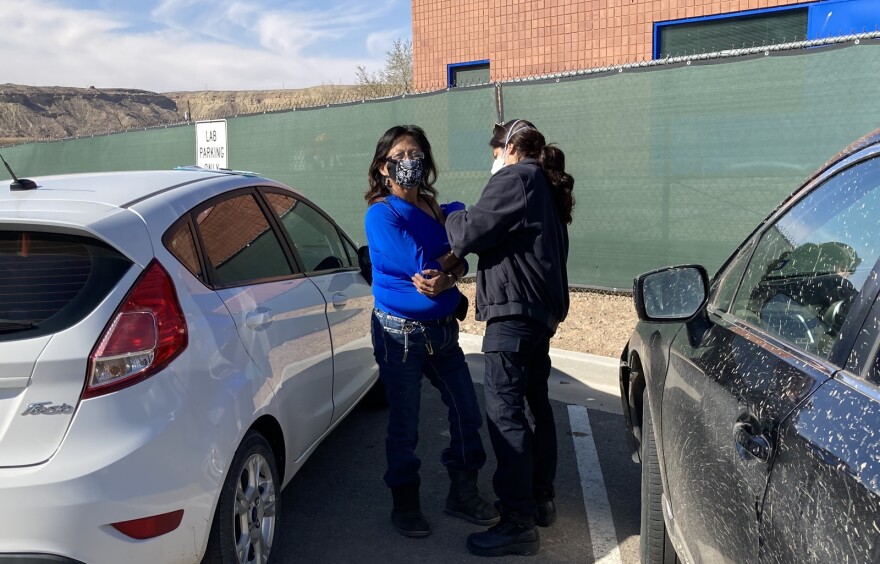COVID-19 vaccinations on the Navajo Nation are starting to slow down now that shots have been available to all adults there for over a month.
Hundreds of people showed up to get the shot every week when the Utah Navajo Health System started holding vaccination drive-throughs in January, according to Byron Clarke, chief operations director for UNHS. It operates three non-profit clinics on the Navajo Nation and one in Blanding.
Clarke said it’s clear the vaccines are working, because UNHS hasn’t identified a case of COVID-19 on the Utah portion of the Navajo Nation in over a month.
But he said interest in getting vaccinated has started to drop off.
“Those who haven’t received it by now, they usually have a good reason,” he said. “Maybe they had a friend or a relative who had intense side effects, things like that.”
Now, UNHS administers around 70 or 80 vaccinations a week, according to Clarke. Last month, UNHS employees began calling patients who haven’t been vaccinated to answer their questions and address their concerns, he added.
Yikanee Sampson, a nursing director with UNHS in Montezuma Creek, said those calls usually work.
“They’re a lot more relieved when they get their questions answered,” she said. “Usually they’re like, ‘Okay, send me back to the front [desk] so I can schedule,’ or ‘Okay, I’ll be coming in.’”
Sampson said at least 35% of UNHS’s 14,000 patients have received the first shot so far. But that number could be much higher, she added, since some patients have likely received the vaccine from a different provider.
“We used the staged approach here at UNHS,” she said, referring to the vaccination eligibility criteria that prioritized elderly people. “So that may have been too slow for some people, and they may have gone to [the Indian Health Service].”
According to the Indian Health Service, which operates a number of clinics on the Navajo Nation in Arizona and New Mexico, around 70% of its eligible patients have received one or both shots.

“We have not seen a great amount of overt hesitancy,” said Dr. Loretta Christensen, chief medical officer for Navajo Area Indian Health Service.
Christensen said the health service is hoping to vaccinate at least 80% of eligible people across the reservation. She said it began working with local governments on the reservation, called chapters, last month to identify and reach out to people who have not gotten the shot.
Seeing family members get vaccinated also seems to be helping.
Julia Yellowman, 53, showed up at UNHS’s Montezuma Creek clinic to get her first dose of the vaccine on Friday. She said she was concerned about the safety and efficacy of the vaccine, so she initially decided not to get it.
“The rush of it really concerned me because most medicine takes over a year to develop and make sure it’s safe for the public,” she said.
But when her sister got the vaccine and only suffered a minor fever and some aches, she said her mind began to change.
“I was thinking, that's the kind of reaction I'm going to have,” she said. “Because we have the same blood.”







